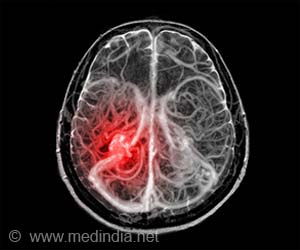Researchers have discovered protein machinery important for cells to keep chromosomes intact. Without such proteins, their experiments show that yeast cells experience broken chromosomes…
Johns Hopkins researchers have discovered protein machinery important for cells to keep chromosomes intact. Without such proteins, their experiments show that yeast cells experience broken chromosomes and DNA damage that in human cells are well known to lead to cancer.
“Maintaining genome integrity is crucial for cell survival,” says Jef Boeke, Ph.D., Sc.D., the report’s senior author, a professor of molecular biology and genetics and co-director of the High Throughput Biology Center of the Institute for Basic Biomedical Sciences at Hopkins. The report will appear online July 6 in Current Biology.Boeke and colleagues show that removing from yeast cells two proteins called sirtuins — Hst3p and Hst4p — causes cells to become hypersensitive to chemical agents and temperature and to spontaneously break and/or lose chromosomes. In humans, the loss or breakage of chromosomes can cause cells to lose control of when and if they are supposed to divide, becoming cancerous.
Nearly every human cell contains about six feet of DNA packaged into chromosomes. Chromosomes consist of DNA wrapped around a scaffold-like structure made of proteins called histones. Each time a cell divides into two, all of this DNA must be copied exactly and repackaged properly with histones to form chromosomes in the new cell.
During the copying process, new chromosomes often have breaks in them that need to be sealed before the chromosome is considered “finished” and the cell is ready to divide into two. All cells have damage control mechanisms that can sense nicks and breaks in chromosomes — DNA damage — and repair them.
“We think acetylation somehow marks the newly copied DNA so the cell knows to repair the breaks,” says Boeke. “Once the breaks are repaired, the acetyl groups no longer are needed and are removed in normal cells.”
Sirtuins Hst3p and Hst4p are proteins required to remove these specific chemical “decorations” — called acetyl groups — from specific sites on histones. The acetyl groups are added to lysine-56, an amino acid in the histone protein chain. Chromosomes in yeast cells missing Hst3p and Hst4p become hyperacetylated on lysine-56 — it appears that every lysine-56 in every histone has attached an acetyl group.
Advertisement
Earlier work showed that yeast cells initially need the lysine-56 decorations to repair breaks or other damage to DNA that occur when the DNA is copied, an essential process that also has the potential to seriously damage DNA. This new work shows that it is even more critical for yeast cells to remove these decorations once repair has been completed. Thus, there is an endless cycle of putting the acetyl groups on whenever there is damage or the danger thereof and taking them off again. Failure to take off the “decorations” leads to loss of entire chromosomes and other problems with the DNA.
Advertisement
The team concludes that by putting an acetyl group on lysine-56, the cell is signaling that its DNA is newly made and as a result possibly contains dangerous breaks. Acetylation on lysine-56 may be a universal mechanism for cells to mark damaged DNA. DNA damage can be caused by exposure to chemical mutagens, chemotherapy or even sunlight.
“There are a million mutagens in our environment,” says Boeke. Once cells repair the DNA damage, it is important to shut off repair machinery and return to normal state. The cells require proteins like the sirtuins Hst3p and Hst4p to act as guideposts to help identify dangerous DNA lesions. If the DNA repair machinery does not fix these lesions to maintain chromosome integrity, the cell would lose control of growth or death.
Moving forward, the team hopes to further understand what controls these sirtuins to remove acetyl groups and how hyperacetylation can lead to such dramatic loss of chromosome integrity.
The High Throughput Biology Center, or HiT Center, of the Institute for Basic Biomedical Sciences is an interdisciplinary and interdepartmental effort. The HiT Center combines approaches from a variety of disciplines including biology, physics, chemistry, mathematics, computer science and engineering with the goal of selectively using high-throughput techniques to accelerate hypothesis-driven research and to speed development of new hypotheses.
The Technology Centers for Networks and Pathways of Lysine Modification at Hopkins dissects signaling networks and pathways by developing and applying genetic and computational approaches, proteomics technologies, mass spectrometry technologies, single-cell profiling and other novel methods to detect, quantify and monitor lysine modifications on DNA-coiling histones. Histone modifications are critical for many biological processes, such as epigenetic control of gene expression, which itself dictates the expression of the proteome in all cells. Other lysine modifications include acetylation, methylation, ubiquitylation and sumoylation.
The researchers were funded by the Ministry of Education, Culture, Sports, Science and Technology of Japan, Cancer Research UK, the Association for International Cancer Research, the Canadian Institutes for Health Research and the National Institutes of Health.
(Source: Newswise)







